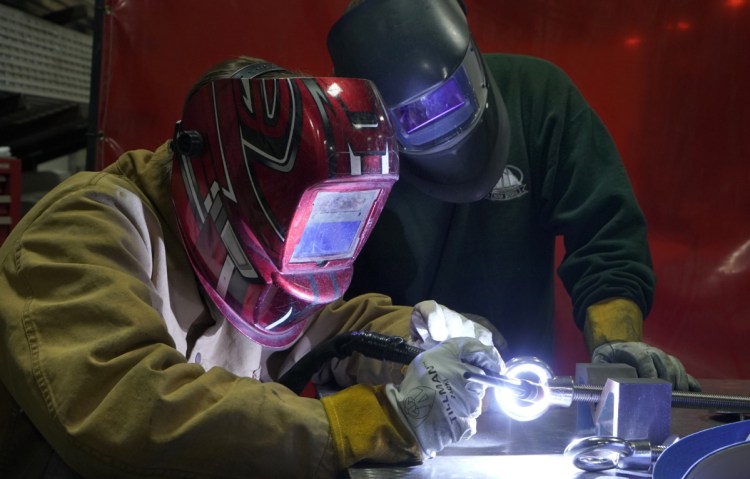Too few Maine students take advantage of career and technical training. Too many high school graduates lose their way after leaving school. Too many well-paying jobs go unfilled.
Each of these problems hurts the Maine economy and holds back its workers. They are also related. But they are not unaddressed.
Thanks to a bill passed last summer, students between the ages of 16 and 18 who are enrolled in a cooperative or vocational training program are now allowed to work with hazardous machinery at jobs outside of school as long as they satisfy basic safety and educational requirements.
That means students who see a future for themselves as welders, plumbers or electricians can accept paid internships in those fields while they complete their studies and figure out what’s next. They can earn money while gaining skills, experience and connections, and they are shown a path to a career.
For students who are not on a clear track to college, or those who would thrive learning outside of a traditional classroom, or who just want a career in a field always looking to hire, that’s good news, as it is for the employers who need workers to fill these in-demand and well-paying jobs.
Welders, electricians, HVAC installers and machinists are among the fastest-growing sectors here, and workers with those skills are perpetually in demand. There are simply not enough people to fill those positions.
Not enough students are choosing that path, however, despite the opportunity. Only 14 percent of Maine students take one or more classes in career or technical education, and just 6 percent choose it as a concentration, both below the national average, according to Educate Maine.
It’s clear that students who could benefit from that kind of education are not taking advantage, and there is no doubt that many of those are among the Mainers whose education stalls after high school or a year or two of college, and then are left with few skills that are transferable to the workplace.
Part of that is the stigma that continues around so-called vocational education.
But any students or parents with reservations should listen to Sam Roy, who at 17 is working as a welder at DeepWater Buoyancy in Biddeford while attending Biddeford Regional Center of Technology, one of the state’s 27 regional career and technical schools.
“Something just clicked” when Roy took a welding class, he told the Portland Press Herald. “I found it more interesting and unique than anything I’d done before.”
Or Jackson Oloya, also 17, who is working up to 24 hours a week at a plumbing and heating contractor. “I’m not a person who stays in an office all day,” he told the newspaper. “I like to put things together. I thought of myself 10 years from now and said, ‘I can do this.’ ”
Career and technical education excites these students in a way the other studies have not. Providing a connection to an employer shows them how they can make a living, and how they can do it in their home state.
The Legislature should take additional steps to encourage use of the career and technical schools. One way is to bring more businesses into the apprenticeship program, to offer students a wider array of opportunities.
The businesses shouldn’t be hard to find – they’re the ones posting all the “help wanted” ads.
Send questions/comments to the editors.


